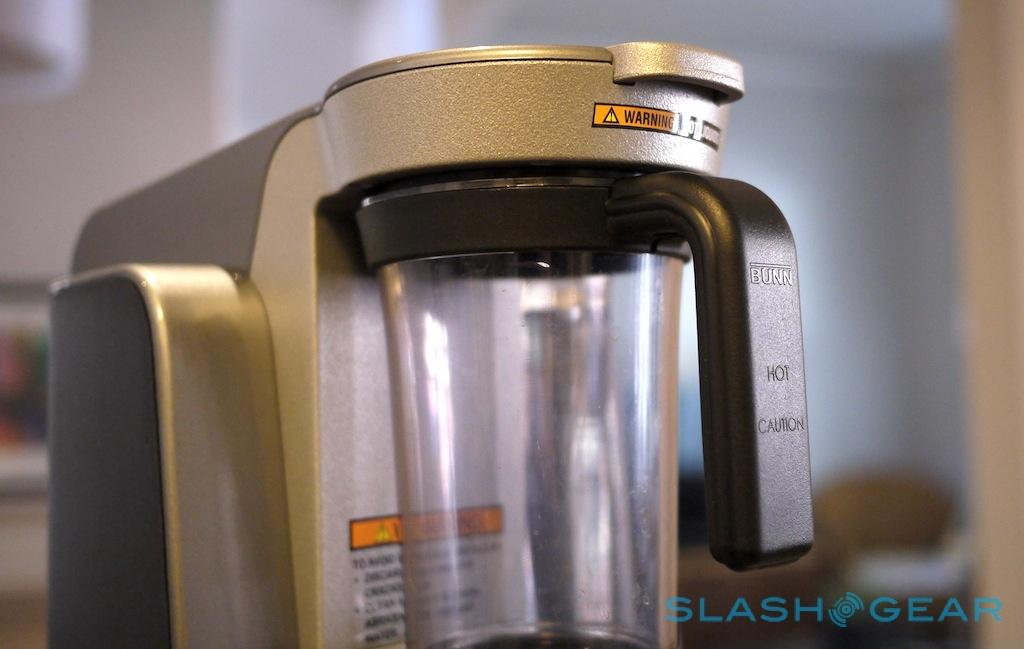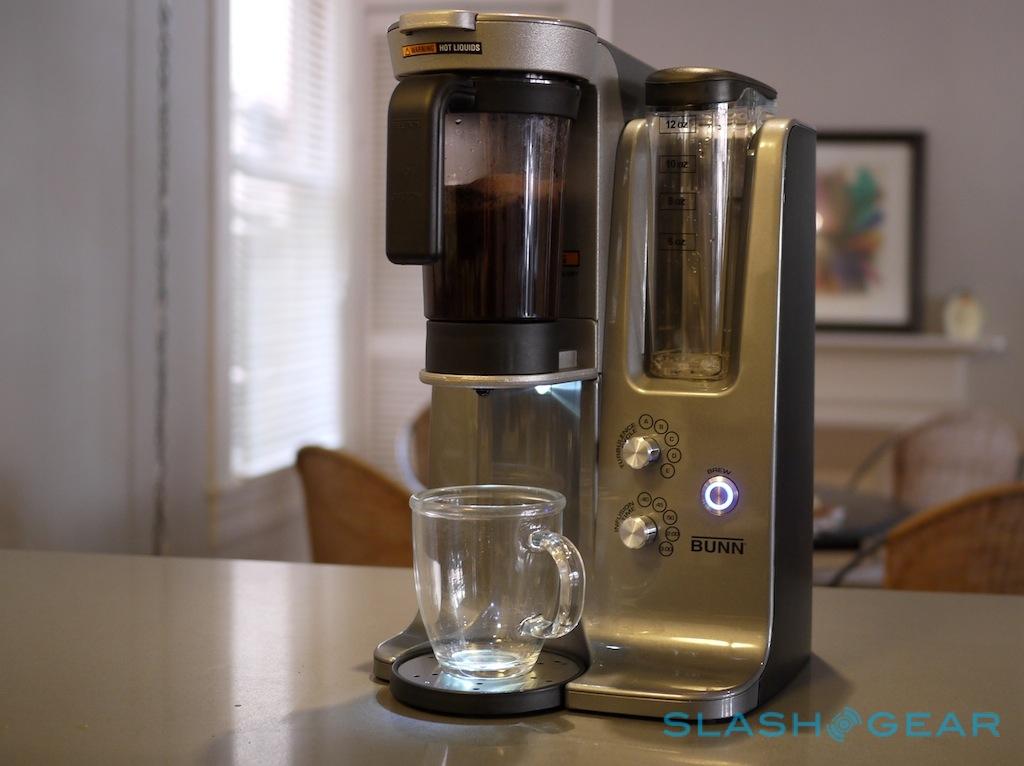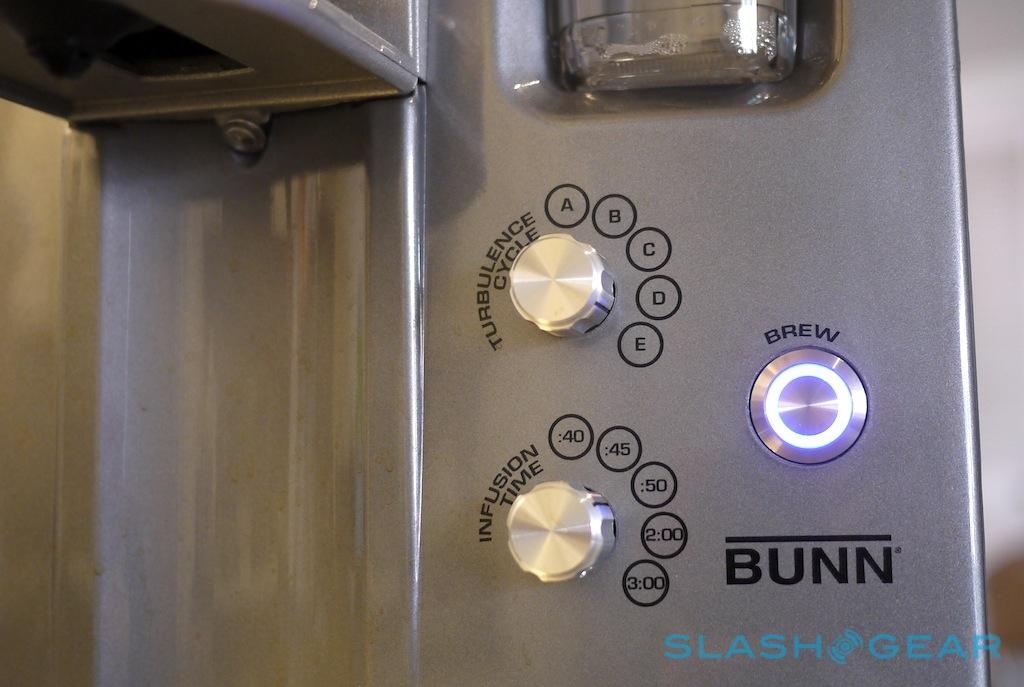Bunn Trifecta MB Coffee Machine Review
Coffee. Delicious, wonderful coffee. Some of us are fueled by it throughout the day; to others it's an occasional treat first thing in the morning or straight after dinner. There's no one "right" way to brew it, and traditional methods like espresso, drip, and French press sit alongside newer upstarts like Clover. Wading into the home market is Bunn's Trifecta MB, the domestic version of its $5k Trifecta for cafes. Designed for a kitchen counter, the Trifecta MB combines elements of drip, Clover, French press, and other approaches, with convenience nearing that of a single-cup pod brewer but the flexibility to bring the very best out of your beans. Still, can it be worth all of $549? Read on for the full SlashGear review.
Hardware and Design
Every coffee brewing method has its advocates, and they can be more than vocal about their preferred style. Some, like pour-over or drip have been mainstays of home coffee making for years; others, like espresso, are comparatively new to the domestic market, at least in any form that's capable of decent results.

There's always room for experimentation, however, and that's what Bunn did with the Trifecta. Initially intended for commercial installation, the somewhat ominous looking brewer uses a combination of air injection and adjustable steeping times in a hybrid of various different methods.
Full Trifecta machines are still in relatively short supply in cafes – Bunn remains better known for its industrial-standard drip brewers – but that didn't stop the company developing the Trifecta MB for domestic use. Smaller, and no longer requiring water plumbing or a high-voltage power supply, the Trifecta MB offers a trimmed-down selection of variables compared to its pro-sibling, but the same core approach.
The system is simple. Like French press or drip you put relatively course-grind coffee into a brew container, to which hot water is added. Bunn then injects air, agitating to extract the flavors and oils, and then uses air to force out the coffee leaving behind a dry puck of spent grounds. Different levels of air agitation can be selected, and different steeping times, including longer periods which Bunn intends to be used with tea instead.
Bunn's aesthetic on the Trifecta MB is more industrial than some of the home coffee machines we've seen in recent years. In fact, you could describe it as faintly laboratory-like: Bunn even supplies a lab-style measuring beaker for filing it with water. The machine itself is relatively tall and narrow, standing 15.25-inches high, by 9.5-inches wide, and 11.5-inches deep. It fit under our regular kitchen cabinets, though it's worth noting that there's a brew chamber release latch that needs to be flipped up on the top that might present an issue if your cupboards are lower than normal.

The majority of the fascia is silver plastic, while the back is black plastic; it all feels sturdy, though it's not quite the chromed lust-magnet many espresso machines aim to be. The brewing chamber is suspended in a metal bracket for stability, and the Trifecta MB as a whole feels well made. On the upper right there's the removable water reservoir which can either be lifted out and filled, or left in place and topped up from the top. Between 6oz and 12oz of coffee can be made in any one brew cycle.

To the left is the brewing chamber itself. Bunn provides two – along with the glass beaker, a small digital scale to weigh out your coffee, and a scoop – made from thick BPA-free plastic with a fixed stainless steel mesh filter at the bottom and a chunky handle. It slides into place in the bracket on a couple of grooves, and then locks into place with the reassuringly-tactile latch on top. Underneath, in a semi-circular cutout, is a removable drip tray; it's easy to empty, which is useful since you'll be doing that fairly frequently as its capacity is small.
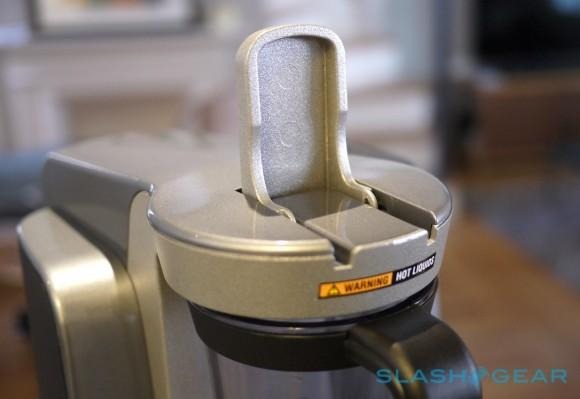
On the lower right of the fascia are the controls, a blue-lit button to start the brewing process, and two knurled metal knobs. The upper controls turbulence, with five positions labeled A through E; the lower handles infusion time, offering three settings intended for coffee (40s, 45s, and 50s) and two for tea (2:00 and 3:00).
Usability
Pod coffee machines have caught on with good reason over the past few years: they're convenient. Purists will argue about the quality and taste, but it's clear that brewers that are straightforward to use will end up making more coffee over their lifespans than those which are tricky to control or clean.
On that front, while the Trifecta MB may look industrially intimidating, actual use is surprisingly straightforward. Put ground coffee into the brew chamber and lock it in place with a cup underneath. Add water to the reservoir, up to the volume that you want in your final cup. Set the turbulence and time dials to the required settings and then press the button.
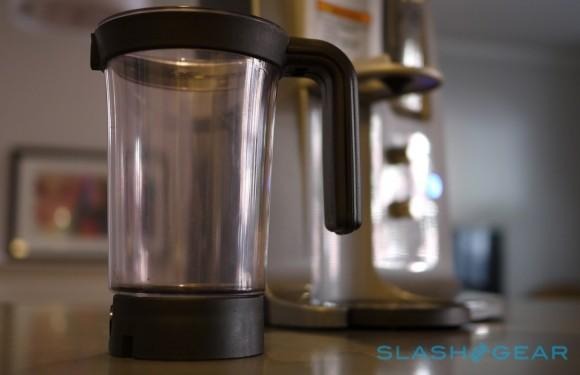
The brewer pulls through a little water initially – the reservoir is backlit with blue LEDs, while a white LED illuminates your cup – feeding it into the bottom of the chamber to presoak the grounds, and then draws through what's remaining. Then, depending on the turbulence setting selected, bubbles of air are pumped through, agitating the coffee for the required period of time. Finally, air forces out the coffee into your cup, continuing even after you might assume all the liquid is gone so as to get out the last remaining oils. Clean-up is a matter of knocking out the dry puck and then rinsing the brew chamber.

Of course, there are some considerations if you're wanting to make the very best cup. As with any brewing method, you'll want to use good, fresh coffee beans – preferably within a few days of roasting, no more than a couple of weeks at most – and grind them just before you make a cup. We paired the Trifecta MB with Baratza's Virtuoso (available for around $229), with a relatively course grind as per Bunn's recommendations.
What water you use is also worth bearing in mind. Bunn suggests spring water, rather than tap, especially if your supply is particularly hard. It's worth noting that each cup is actually made by water already boiled inside the Trifecta MB – you "charge it" when you first set it up, filling it with around a reservoirs' worth – not the water you put in just before brewing. If the machine has been sitting idle for some time, then, it's worth running an empty chamber through so as to get fresher water prepared; it also helps bring the various parts up to temperature.
Performance
Bunn's claim is that, by adjusting the brewing time and turbulence according to the origin, roasting style, and variety of the beans, the Trifecta MB can pull out the distinctive flavors of each cup more successfully than a traditional drip or pour-over setup. Moreover, it's more repeatable than other methods, reducing the variables down to coffee type, the age of the beans, and the fineness of the grind.

In practice, we were surprised by just how differently a cup made with the same coffee beans but with different time and turbulence settings could taste. Bunn provides some guidelines for starter settings depending on origin and roast – Ethiopian beans benefit from minimal agitation and the shortest brew time, for instance, whereas Guatemalan beans do best with maximum agitation and mid-term brewing; Kenyan beans prefer a longer brew but with mid-range turbulence – though the expectation is that you'll experiment as you go along.

Even just from our first cup and the default suggestions, however, we were impressed. An Indonesian espresso roast, which had tasted bold but blunt in a regular drip coffee maker, showed incredibly rich hazelnut flavors in the Trifecta MB, to the point where one of our testers wondered if we'd snuck in some hazelnut syrup when they weren't looking. Dialing down the turbulence and the same coffee grew more acidic and less sweet.
Over the course of our testing, we put multiple different coffees through the Bunn, ranging from speciality beans from San Francisco's Blue Bottle Coffee, to more mainstream options from Peet's and Starbucks. Blue Bottle's best-selling Bella Donovan, for instance, was almost overpoweringly citrusy at turbulence level C and brewed for 45s, with a strongly floral aroma; switched to level D and 50s, and the florals gave way to more earthy tones while the citruses mellowed.
Blue Bottle's Three Africans, meanwhile, is billed as delivering dried blueberries and cardamom, with plenty of chocolate aroma. Brewed for 50s at turbulence level C it was good if not outstanding, but cranked up to setting E it gained far more character, the subtle fruitiness sitting nicely alongside good body. It's notable that, while we might often reach for milk or cream to go in our coffee, the Bunn is encouraging us to drink it black instead.

If the Trifecta MB has its faults, it's that it can highlight the shortcomings of more pedestrian coffee. Starbucks' House Blend, for instance, tasted unduly roasted, with some not entirely pleasant bitterness that we didn't notice from the same beans in a regular drip machine. Peet's Ethiopian Fancy did somewhat better, though fell short of the fruit surge we were promised.
Bunn's aeration design is good, but it's not perfect. During the less aggressive turbulence programs and with only 6oz of water in use, we found that the off-center inlet for presoaking could leave some of the grounds still partially dry, a problem which wasn't then addressed by agitation as the bubbles cut out before the coffee was fully circulating. Unlike in a pourover or drip situation, you can't open up the brew chamber to give things a manual stir. LIke with a French press, meanwhile, the metal rather than paper filter mesh means you do get a few fines in the bottom of your cup, though we didn't find them to be overly intrusive.
As for tea, while the Trifecta MB is focused on coffee, it will also deliver single cups of tea. With two brew chambers included, it's straightforward to keep on for coffee and one for tea, avoiding flavor contamination in the process.
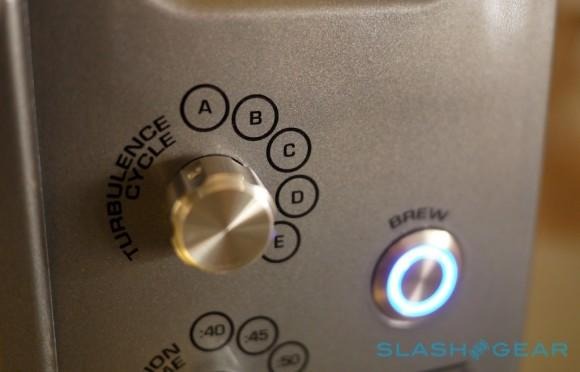
Bunn makes a few suggestions for tea settings – generally minimal turbulence and 2:00 steeping time – but also warns the Trifecta MB is not recommended for green tea. However, when we tried it with a Japanese green bancha tea – 50s and turbulence A, as close to the tea supplier's 1:00 brew and minimal stirring instructions as the Bunn could get – we had excellent results nonetheless. Subsequent brewings from the same leaves were also a success, and we were able to use the higher agitation settings to counter the multiple steepings. It might not be in line with an official tea ceremony, but it satisfied our resident tea drinkers all the same.
Price and Value
For a method of making brewed coffee, the Trifecta MB isn't cheap. When you can have Bonavita's well-reviewed drip machine for $170 (or a Technivorm that will last you a lifetime for $300), the $549 of the Bunn starts to look outlandish. That's even more the case when compared to an Aeropress or Clever Coffee Dripper, both manual but allowing for plenty of brew-tweaking and for around thirty bucks apiece.
In the grander scheme of (coffee) things, though, $549 is actually pretty reasonable for a specialist machine. If you opt for espresso, for instance, you could spend significantly more on a decent home model, not to mention require a more capable grinder than the sort of entry-level burr grinder which will satisfy the Trifecta MB's coarse needs.

Beyond finding a cafe with a full Trifecta on offer, your closest comparison is likely to be Clover brewed coffee, currently found in a few hundred Starbucks branches across the globe. Starbucks will only make that with coffees from its "Reserve" range and charges on average around $2.65 a cup. In short, once you factor in the price of a grinder, you could have a cup of Clover coffee a day for getting on for a year for what a Trifecta MB setup would cost you, and that's before you've even supplied the Bunn with beans.
Still, it's perhaps an unfair comparison. Clover is an interesting brewing method, for sure, but Starbucks won't let you bring in your own coffee to try in it. That leaves you at the mercy of the Starbucks Reserve options themselves. Frankly, prosumer coffee machines have never really been about saving money; it's about having the choice, flexibility, and control over the drink you're enthusiastic about.
Wrap-Up
The Bunn Trifecta MB isn't going to kill Mr. Coffee. Basic drip machines, simple pour-over cones, and more tweak-friendly options like Aeropress and the Clever Coffee Dripper are all more affordable than Bunn's aerating curiosity, even if they lack its unique flexibility.
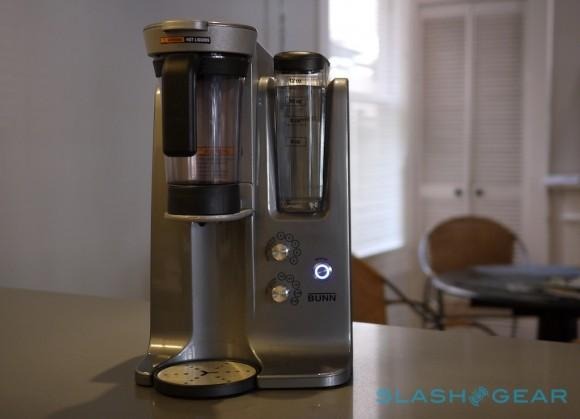
It's that flexibility which singles out the Trifecta MB, though, along with its consistency. Being able to tease out different characteristics from the same beans with the flick of a dial is still so much a rarity for the home market as to effectively make the Bunn unique. The mad-scientist-lab appearance is actually quite appropriate, since experimentation is key to the machine's appeal.
Sure, if you're just looking for a standard cup of wake-up juice first thing in the morning you might not need the Trifecta MB's skills. If you want to explore the best of single varietals, small-lot speciality blends, and even your own home-roasted beans, the Bunn is a revelation.

